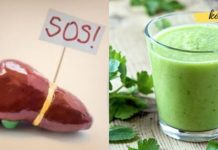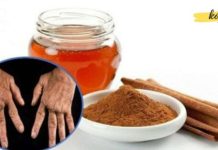What Ancient Indian Medicine Says About Joint Inflammation
Discover the 3,000-year-old wisdom of Ayurveda for naturally relieving joint pain and inflammation.

Joint inflammation—commonly associated with arthritis—is one of the most prevalent health challenges globally. While modern medicine offers pharmaceutical treatments that can be highly effective, particularly in severe cases, ancient Indian medicine, known as Ayurveda, offers natural, time-tested remedies that have been used for over 3,000 years to manage inflammation, pain, and stiffness in the joints.
Ayurveda focuses not only on relieving symptoms but also on addressing the root causes of disease. When it comes to joint inflammation, Ayurvedic teachings suggest that the issue often stems from an imbalance in the body’s internal systems, aggravated by factors such as poor digestion, accumulated toxins (called ama), poor diet, stress, and lack of physical activity.
Let’s explore some of the most effective Ayurvedic practices and natural home remedies to help relieve joint inflammation and promote long-term wellness.
🧠 1. Keep a Stress Journal – Mind-Body Healing
According to Ayurveda, emotional health is deeply connected to physical health. Chronic stress and anxiety can trigger inflammatory responses in the body. This is why one of the first recommendations in Ayurvedic practice is to track your stress and emotional triggers.
By keeping a daily stress journal, you can become more aware of what situations or habits lead to discomfort or flare-ups. For example, do your joints feel more inflamed after a poor night’s sleep or a stressful day? Do you notice discomfort after consuming dairy or certain processed foods? This practice can also help identify possible food intolerances that contribute to inflammation.
Understanding your body’s reactions to stress allows you to take preventive action and reduce the root cause of inflammation, rather than just treating symptoms.
🌿 2. Turmeric – The Golden Healer
One of the cornerstones of Ayurvedic medicine, turmeric (known as haldi in India) contains a powerful anti-inflammatory compound called curcumin. Studies have shown that curcumin may be as effective as some pharmaceutical anti-inflammatory drugs, but without the negative side effects.
Turmeric can help:
Reduce joint pain and stiffness
Improve flexibility
Lower systemic inflammation
To incorporate turmeric into your routine:
Add it to curries, soups, or scrambled eggs
Mix it into a smoothie
Stir it into a glass of warm milk with a dash of black pepper (which enhances curcumin absorption)
Daily consumption can lead to noticeable relief over time.
🌱 3. Ginger – A Spicy Solution for Joint Pain
Ginger, another ancient Ayurvedic root, is rich in antioxidants and anti-inflammatory agents. It has been shown to be effective in:
Reducing joint swelling
Minimizing morning stiffness
Relieving muscle soreness
Try drinking fresh ginger tea every morning by steeping a few slices in hot water. You can also grate fresh ginger into your dishes or take ginger capsules after consulting a healthcare professional.
🥣 4. Yogurt – Heal From the Inside Out
Did you know that 60–70% of your immune system resides in your gut? According to Ayurveda, a healthy digestive system is essential for preventing inflammation throughout the body.
Probiotic-rich foods like yogurt help maintain a healthy gut microbiome. This, in turn, strengthens the immune system and reduces inflammatory responses that affect joints.
Make it a habit to consume plain, unsweetened yogurt regularly, especially in the morning or as part of lunch. Avoid processed or flavored yogurts, which may contain sugars that contribute to inflammation.
🛏️ 5. Prioritize Quality Sleep
In Ayurveda, sleep is one of the three pillars of health (alongside diet and daily routine). Without proper rest, the body cannot recharge, repair, and balance itself. Lack of sleep leads to increased levels of inflammatory markers, weakening the immune system and aggravating joint pain.
Aim for 7–8 hours of deep, uninterrupted sleep each night. Consider calming bedtime rituals such as:
Drinking warm herbal tea
Practicing gentle stretches or deep breathing
Turning off electronics an hour before bed
Restorative sleep allows your body to heal naturally and fight off inflammation more effectively.
🤲 6. Self-Massage (Abhyanga) – Nourish the Joints
Ayurveda highly recommends daily oil massage, known as abhyanga, to promote circulation, relieve stiffness, and nourish joint tissues.
Here’s how to do it:
Warm up ½ cup of sesame, sunflower, or coconut oil
Massage your joints and muscles in circular motions for 10–20 minutes
Follow with a warm bath or shower
This calming ritual helps relax the nervous system, flush out toxins, and reduce inflammation over time. It’s not just a physical practice—it calms the mind as well.
🧘 7. Gentle Movement – Yoga, Swimming, or Cycling
Regular physical activity is vital to maintaining joint flexibility and reducing inflammation, but intense or high-impact exercise can worsen symptoms.
Ayurveda recommends low-impact, joint-friendly exercises, such as:
Yoga: Especially poses that focus on flexibility and breath
Swimming: Relieves joint pressure and supports full-body movement
Cycling: Encourages smooth joint motion without strain
Aim for at least 30 minutes of moderate activity five times a week to maintain joint mobility and overall vitality.
🥗 8. Anti-Inflammatory Herbs & Foods – Cilantro and Fenugreek
Both cilantro (coriander) and fenugreek (methi) are celebrated in Ayurveda for their cooling and anti-inflammatory properties. They help balance pitta dosha, which is often linked to inflammation in the joints.
Incorporate these herbs into your meals regularly:
Sprinkle fresh cilantro over soups and salads
Use fenugreek seeds in curries or soak them overnight and consume in the morning
These herbs are best consumed alongside naturally sweet, bitter, and astringent foods, which help counteract inflammation. A perfect Ayurvedic dinner could include steamed pomegranate with turmeric, cashews, and fresh cilantro—a delicious and healing combination.
🌟 Final Thoughts
Ayurvedic medicine teaches that healing comes not from targeting symptoms, but from bringing the whole body back into balance. If you’re struggling with joint inflammation or early signs of arthritis, integrating these ancient principles into your life can offer gentle yet powerful relief.
Remember:
Identify and reduce stress triggers
Eat anti-inflammatory foods and herbs
Stay physically active with joint-safe exercises
Prioritize gut and sleep health
Nourish your body through touch and mindfulness
Before beginning any new treatment—natural or otherwise—consult a healthcare professional, especially if you’re taking medications or have underlying conditions. But rest assured: the wisdom of Ayurveda, tested by time and tradition, has much to offer in your journey toward pain-free, holistic living.












